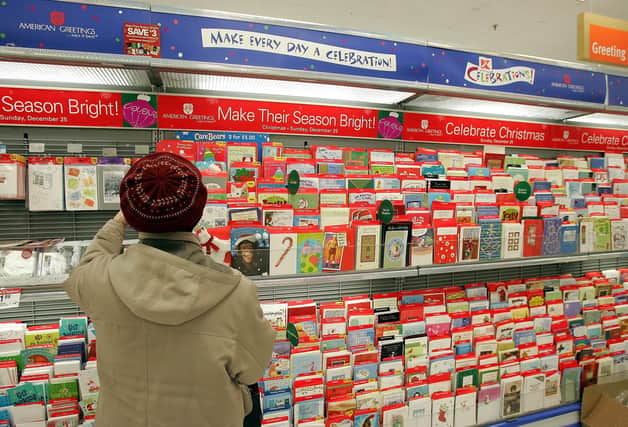Could this be the year for a Christmas card comeback? | Blaise Tapp


I know this, not because I am secretly moonlighting as Mystic Meg’s portly understudy, but because, every year for the past twenty, our first greeting of the season has always arrived a good week before the rest of us have even thought about dusting off the address book.
The impressively prompt missive, which is the work of Mrs Tapp’s ever-efficient Yorkshire-based cousin, is our annual reminder to get a wiggle on and write to folk, who in many cases, we haven’t been in touch with since an exchange of polite platitudes exactly 12 months earlier.
Advertisement
Hide AdAdvertisement
Hide AdSending and receiving cards this time of year is arguably the greatest of seasonal traditions, up there with sticking a dying tree in your front room and in a different league to the tedium of wearing a novelty sweater or falling out with strangers on social media about whether or not it’s right to broadcast the original Fairytale of New York on the radio.
The sending of Christmas cheer through the post is a ritual that has endured nearly 180 years and until quite recently was something that the vast majority of the population did.
Growing up in the 1980s, it was not uncommon to enter a home entirely festooned with cards featuring robins, kings, or if you were especially unfortunate, those personalised efforts featuring a grim-faced family portrait.
Back then the number of cards you received was seen, by some, as a barometer of one’s popularity, if not social standing – if you didn’t require a piece a string from which to hang some of your vast collection of festive messages then you weren’t doing life right.
Advertisement
Hide AdAdvertisement
Hide AdA long since departed aunt took great pleasure in informing every visitor to her well-appointed bungalow precisely how many cards she had received that particular year.
Like many of her contemporaries back then, not receiving one from a vague acquaintance meant only one thing – that they were no longer ‘with us’ – further illustrating their importance as a communications tool 30-odd years ago.
Much has been made of the diminishing popularity of the Christmas card in recent years, due to the fact that staying in touch with friends has become so much easier than it used to be.
Instant messages, emails, video clips, a tweet, and even a phone call are all acceptable methods of telling somebody that they are in your thoughts in the run-up to December 25th but I will take a card over any of them.
Advertisement
Hide AdAdvertisement
Hide AdI don’t think you can beat a handwritten note from a friend or relative, even if it is blatantly obvious that it has taken them all of six seconds to compose.
Better still is a card with a ‘proper’ message, even if simply informs you that Uncle Joe is still suffering from lumbago or that young Nathan has taken up the tuba.
I still miss cards from my granddad, which always included an A5 letter at least four pages long, summarising his year – even though I had spoken to him on the phone at least twice every week.
Although I officially gave up second-guessing the British public after the Brexit vote, it wouldn’t surprise me if there is a Christmas card renaissance this year – I hope so anyway.
Advertisement
Hide AdAdvertisement
Hide AdMany of us have more time on our hands than we can previously remember so there really shouldn’t be any excuse not to write to those pals and relatives that we have been unable to meet with for much of this year.
The significance of receiving a handwritten letter or card will be all the greater for so many right now – especially those who haven’t ventured further than the corner shop and are at the mercy of the worst of all afflictions – loneliness.
Here’s to the power of the humble Christmas card.
Comment Guidelines
National World encourages reader discussion on our stories. User feedback, insights and back-and-forth exchanges add a rich layer of context to reporting. Please review our Community Guidelines before commenting.